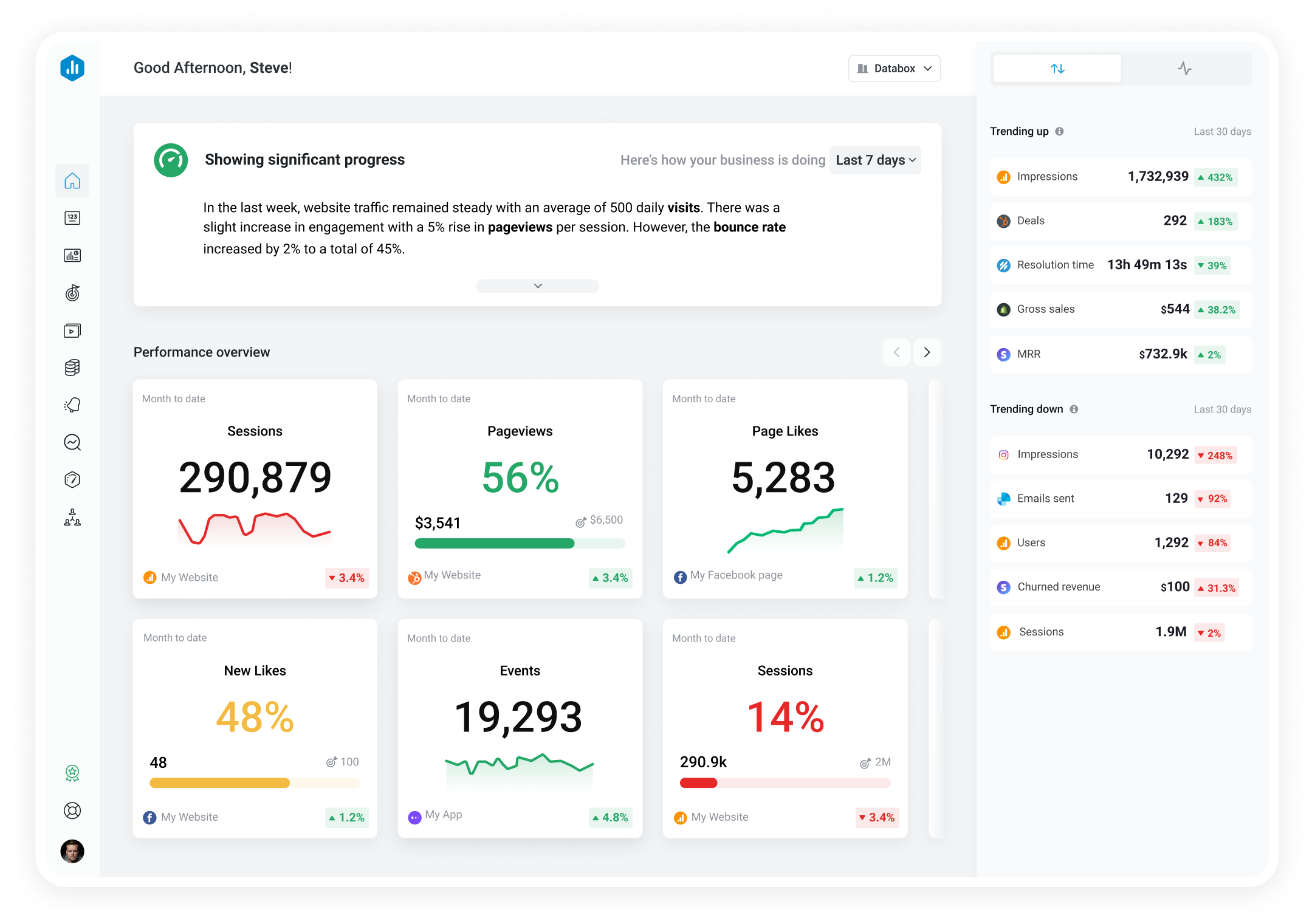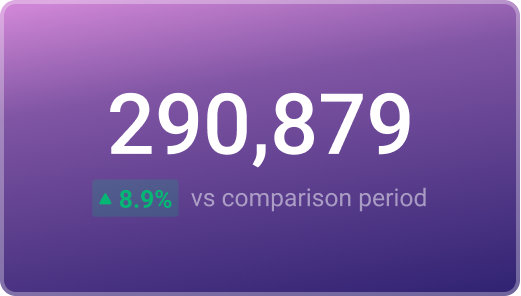Track all of your key business metrics from one screen
GET STARTED
 Intercom
Users
Intercom
Users The Users metric in Intercom provides the total number of individual users who have interacted with your website or product through the Intercom platform.
With Databox you can track all your metrics from various data sources in one place.

Used to show a simple Metric or to draw attention to one key number.
Databox is a business analytics software that allows you to track and visualize your most important metrics from any data source in one centralized platform.
To track Users using Databox, follow these steps:
 Goals
Goals Scorecards
Scorecards Metric Digest
Metric Digest Metric Builder
Metric Builder Data Calculations
Data Calculations Performance Screen
Performance ScreenIntercom account overview databoard template gives you insights about new and closed conversations, active and slipping away users and more

